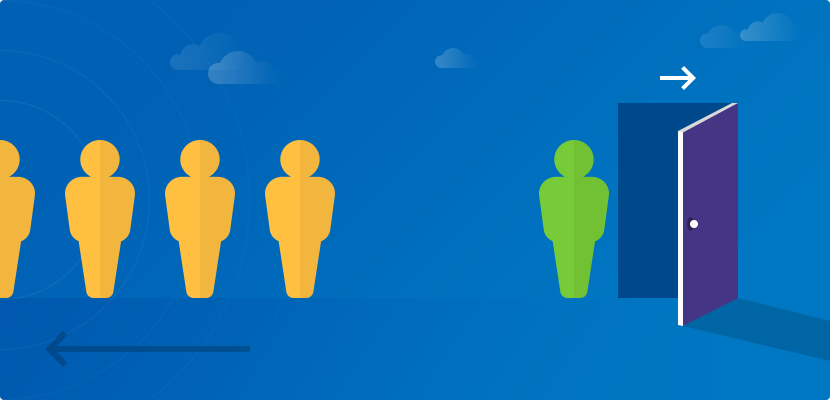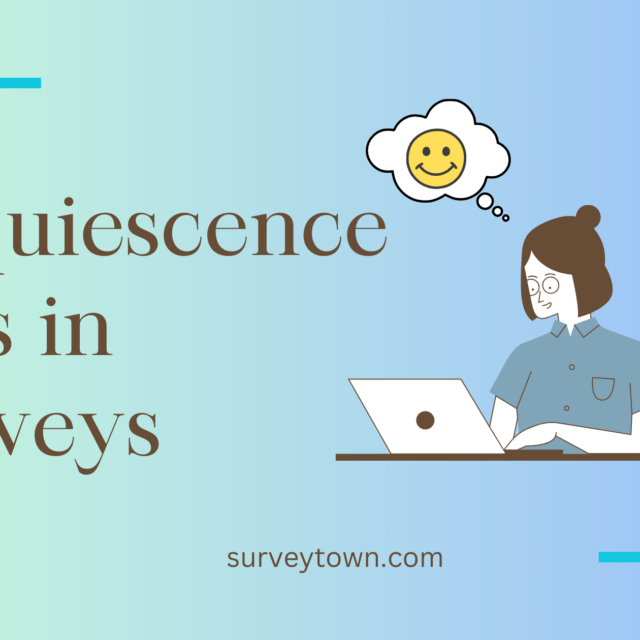Expert Strategies to Prevent Customer Churn: As industry experts, we know how crucial it is to have effective strategies in place to prevent customer churn. When customers stop using your product or service, it not only hurts your revenue but also limits future growth opportunities. In this article, we’ll provide valuable insights and tips on combating churn and ensuring the success of your business.
Understanding Customer Churn: The Key to Profitability
Customer churn refers to when clients discontinue using a product or service. It’s a critical metric that directly impacts profitability and growth. Losing customers means losing out on recurring revenue streams, which can significantly hurt your bottom line. Acquiring new customers is often more expensive than retaining existing ones, making customer retention vital for sustainable growth.
To truly grasp the importance of preventing customer churn, let’s consider an example. Imagine you run an online subscription-based software-as-a-service (SaaS) business charging $50 per month per user. If you have 1,000 users with a monthly churn rate of 5%, that means you lose 50 users every month. Over a year, this translates into losing 600 users and $30,000 in annual recurring revenue.
Identifying the Causes of Customer Churn
Customer churn, or when customers stop using a product or service, is a crucial metric that directly impacts business profitability and growth. As experts in preventing customer churn, we understand the importance of identifying why customers leave in order to develop effective strategies. There are several common factors that contribute to customer churn:
- Poor customer experience: When clients have negative encounters with a company, such as receiving subpar customer service or encountering issues with the product, they are more likely to churn.
- Perceived lack of value: If users don’t see the worth in continuing to use a product or service, they may switch to competitors who offer better benefits and features.
- Price sensitivity: Some clients prioritize price and will opt for cheaper alternatives if they believe they can find similar value elsewhere.
- Changing needs or circumstances: Customers’ requirements and situations can evolve over time, leading them to no longer require the offered product or service.
- Competition: The presence of strong competitors offering comparable products or services can entice customers away from your business.

To pinpoint the causes of customer churn, it’s essential to gather feedback from your existing client base. This valuable feedback can provide insights into areas where improvements need to be made in order to effectively retain customers. By actively seeking feedback through surveys, interviews, monitoring online reviews, and social media mentions, you gain an understanding of which factors contribute most significantly towards attrition within your specific industry sector. Remember that each business faces its own unique challenges when it comes to reducing customer churn rates. Therefore, it’s important not only to comprehend these common causes but also to tailor your approach based on your specific target audience and market segment for maximum effectiveness.
The Role of Customer Satisfaction in Churn Prevention
Customer satisfaction is the linchpin when it comes to preventing churn. When your clients are satisfied with their experience, they become loyal users who continue to utilize your products or services. Conversely, dissatisfied customers pose a higher risk of churning. Let’s delve into the important factors surrounding customer satisfaction and its impact on churn prevention:
- Influence on Customer Loyalty:
- Satisfied clients exhibit greater loyalty and contribute more value over their lifetime as customers.
- They are more inclined to recommend your offerings to others, potentially attracting new users.
- By prioritizing customer satisfaction, you can cultivate strong relationships with existing clients and enhance their loyalty.
- Strategies for Enhancing Customer Satisfaction:
- Elevate product quality: Continuously monitor feedback from users and make improvements accordingly.
- Enhance customer service: Provide prompt and helpful support through various channels like phone, email, or live chat.
- Personalize the user experience: Tailor interactions with each individual client by understanding their preferences and needs.
- The Significance of Gathering Customer Feedback:
- Regularly collect feedback from your clientele through surveys, interviews, or online reviews.
- Analyze this valuable input to identify areas for improvement promptly and address any concerns raised.
- Leveraging Net Promoter Score (NPS):
- NPS is a widely recognized metric that gauges how likely customers are to recommend your business on a scale from 0-10.
- It provides insights into overall customer satisfaction levels while identifying promoters (loyal advocates) who positively influence retention rates.
- Monitoring Key Performance Indicators (KPIs):
- Keep track of essential KPIs related to customer satisfaction, such as average response time for support inquiries or complaint resolution rate.
- Regularly review these metrics to spot trends and pinpoint areas that require improvement.
By placing customer satisfaction at the forefront, you can significantly reduce churn rates and foster enduring relationships with your users. Remember, satisfied customers are more likely to remain loyal and contribute to the sustained growth of your business.
Leveraging Data to Predict and Prevent Churn
Welcome to the data-driven era, where businesses have a game-changing weapon in their arsenal to combat customer churn. By harnessing the power of data analytics, companies can gain invaluable insights into customer behavior and proactively identify potential churn risks. In this section, we will explore how businesses can leverage data to their advantage in the battle against customer attrition.
- Mastering Data Analytics: Data analytics is all about collecting, analyzing, and interpreting vast amounts of information to uncover hidden patterns, trends, and correlations. When it comes to preventing churn, businesses can employ cutting-edge techniques like predictive modeling and machine learning algorithms to pinpoint customers who are most likely to jump ship.
- The Game-Changing Role of Predictive Analytics: Predictive analytics takes data analysis one step further by using historical patterns to make predictions about future events or behaviors. In terms of churn prevention, predictive analytics empowers businesses with proactive measures such as personalized incentives or targeted marketing campaigns for at-risk customers.
- Tapping into Customer Behavior Insights: Understanding customer behavior throughout their journey with your business is crucial for predicting churn accurately. By tracking user interactions across various touchpoints (e.g., website visits or app usage), you can gather valuable insights into what drives engagement or dissatisfaction among your clients.
- Decoding Usage Patterns: Another goldmine for predicting churn lies in deciphering usage patterns. By closely monitoring how frequently customers interact with your product or service and which features they gravitate towards the most, you can spot warning signs indicating decreased satisfaction or potential reasons for attrition.
- Merging Internal and External Data Sources: To supercharge prediction accuracy even further, consider merging internal customer data (such as purchase history) with external sources like social media sentiment analysis or industry benchmarks. This holistic approach provides a comprehensive view of each individual’s likelihood to churn.
- Implementing Proactive Churn Prevention Strategies: Armed with these invaluable insights, businesses can implement proactive churn prevention strategies. For instance, if a customer’s usage patterns indicate waning engagement, you could reach out with personalized recommendations or exclusive offers to reignite their interest.
- Continuously Monitoring and Fine-Tuning Strategies: It is crucial to continuously monitor the effectiveness of your churn prevention strategies and refine them based on fresh data insights. Customer behavior and preferences evolve over time, so staying up-to-date with their needs ensures that your efforts remain relevant and impactful.
By harnessing the power of data analytics to predict and prevent customer churn, businesses can take proactive measures to retain their most valuable clients. The ability to identify at-risk individuals early on allows for targeted interventions that boost satisfaction and loyalty while reducing overall churn rates. In the next section, we will delve into key elements of a successful customer retention strategy.
Implementing a Customer Retention Strategy
As experts in customer churn prevention, we know firsthand the importance of implementing a solid customer retention strategy. In this section, I will share with you the key elements that make up a successful retention strategy and highlight how customer engagement and personalization play a vital role in keeping customers loyal.
- Understand Your Customers: To create an effective retention strategy, it is crucial to truly understand your customers. This involves gathering data on their preferences, behaviors, and needs. By analyzing this valuable information, you can identify patterns and trends that will help tailor your approach to each individual customer.
- Build Strong Relationships: Building strong relationships with your clients is paramount for retaining them. Providing excellent customer service at every touchpoint – from initial contact to post-purchase support – is essential. Ensure that your team is trained to handle any issues or concerns promptly and efficiently.
- Offer Personalized Experiences: Clients appreciate personalized experiences that cater specifically to their needs and interests. Utilize the data you have collected to personalize communication, recommendations, and offers for each individual user. This level of personalization demonstrates that you value their business and are committed to meeting their unique requirements.
- Provide Ongoing Value: To keep clients engaged and satisfied throughout their journey with your company, it’s important to provide ongoing value. This could include offering exclusive discounts or rewards programs for loyal users or providing regular updates on new features or improvements related to your product or service.
- Foster Community Engagement: Creating a sense of community among your clients can significantly impact retention rates positively. Encourage interaction between users through forums, social media groups, or online communities where they can share experiences and offer support to one another.
- Track Customer Satisfaction Metrics: Regularly measuring client satisfaction using surveys or feedback forms allows you to proactively identify areas for improvement.
- Reach Out: Reach out proactively when there are signs indicating potential churns, such as decreased usage frequency, a negative sentiment expressed in customer feedback, or a sudden drop in engagement.
By implementing these expert strategies into your customer retention strategy, you can significantly reduce churn rates and increase client loyalty. Remember, the goal is to create an experience that not only meets but exceeds clients’ expectations, ensuring they remain loyal advocates for your business.

Case Study: Successful Churn Prevention Strategies
In this section, we will delve into real-life case studies of businesses that have effectively reduced customer churn. By examining their strategies and the remarkable results they achieved, you’ll gain invaluable insights into implementing effective churn prevention techniques.
Example 1:
- Company X is a leading software-as-a-service (SaaS) provider in the healthcare industry.
- They adopted a proactive approach to prevent churn by closely monitoring user behavior and engagement metrics.
- Through meticulous data analysis, they identified crucial indicators of potential churns, such as decreased usage or lack of feature adoption.
- To tackle these issues head-on, Company X developed targeted email campaigns and in-app notifications to educate users about new features and encourage them to upgrade their subscription plans.
- As a testament to their efforts, Company X successfully slashed its customer churn rate by an impressive 20% within just six months.
Example 2:
- Company Y is a renowned e-commerce retailer specializing in fashion apparel.
- Recognizing the significance of personalized customer experiences in fostering loyalty and reducing churn, they took decisive action.
- Leveraging advanced analytics tools, they segmented their vast customer base based on purchase history, browsing behavior, and preferences.
- Armed with this valuable information, they tailored product recommendations and promotional offers for each segment to enhance overall satisfaction while driving repeat purchases.
- Additionally, Company Y implemented an exceptional customer support system that provided timely assistance through various channels like live chat and social media platforms. These initiatives resulted in a substantial decrease in customer churn rate for Company Y while simultaneously boosting overall revenue.
Example 3:
- Company Z is a prominent telecommunications company offering internet services to residential customers.
- Faced with intense competition from other providers causing high attrition rates, they tackled this challenge head-on by focusing on improving service quality through significant investments in network infrastructure and customer support capabilities.
- They also introduced loyalty programs that rewarded long-term customers with exclusive benefits and discounts.
- By consistently delivering a superior user experience, Company Z successfully reduced churn by an impressive 15% over a six-month period.
These compelling case studies underscore the importance of understanding your target audience, harnessing the power of data analytics, and implementing personalized strategies to prevent customer churn. By drawing inspiration from successful businesses across various industries, you can adapt their approaches to suit your own unique circumstances.
Conclusion: The Importance of Continuous Improvement in Churn Prevention
As churn prevention experts, we know the key to keeping customers and boosting profits lies in continuous improvement. Churn is when customers stop using a product or service, and it can seriously impact your company’s success. By analyzing customer data and conducting regular business analysis, you can uncover why some customers leave while others stay loyal. This knowledge is invaluable for making proactive decisions to reduce attrition.
Advanced prediction models that combine historical data with future projections are a game-changer. They accurately calculate the likelihood of individual users leaving so you can take action to retain them. This not only helps keep your existing customer base strong but also increases retention rates overall.
Continuous improvement means staying current with industry trends, upgrading based on user feedback, and enhancing the customer experience at every turn. It requires understanding your target audience deeply so you can deliver solutions that meet their expectations before they even express dissatisfaction or consider leaving altogether. By doing this, you show your commitment to exceptional service and long-term client satisfaction.
For businesses relying on Software-as-a-Service (SaaS) models, reducing churn is crucial for sustainable growth since recurring revenue from subscriptions is vital. To effectively minimize churn:
- Analyze customer usage data regularly.
- Use advanced prediction models.
- Stay up-to-date with industry trends.
- Proactively address concerns before they escalate.
- Prioritize exceptional service and improve the overall customer experience.
Implementing these strategies will significantly decrease churn rates, increase retention, and drive revenue growth for your enterprise – all through continuous improvement efforts! Remember: it’s not just a one-time thing but an ongoing process fueled by dedication, knowledge, and understanding of your customers’ needs. Welcome this approach wholeheartedly as it transforms your business into a thriving success story!




